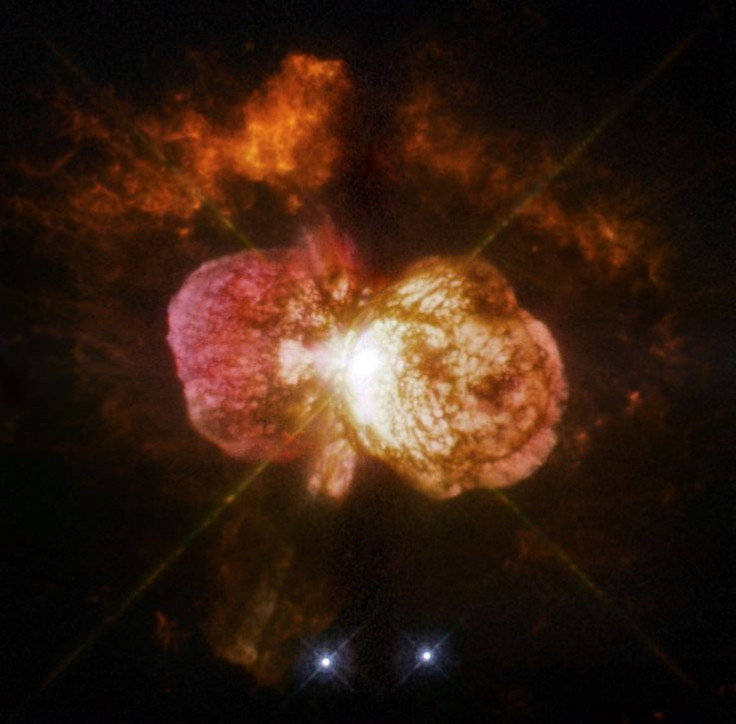NASA Study Reveals New Secrets Of Eta Carinae, The Most Luminous Stellar System
A long-term study, led by astronomers at NASA, has provided what scientists have called “the most comprehensive picture” of Eta Carinae, the most luminous and massive stellar system, which lies within 10,000 light-years of Earth. First catalogued in 1677, Eta Carinae stellar system is expected to explode as a supernova in future because of its mass and age.
According to NASA, astronomers have used ground-based telescopes and other equipment to take an "unprecedented" look into Eta Carinae. The new findings, based on images from the Hubble space telescope, show decade-old shells of ionized gas emitting from the superstar at million miles an hour. In addition, new 3-D models of the stellar system also reveal unique features of the stars' interactions.
“We are coming to understand the present state and complex environment of this remarkable object, but we have a long way to go to explain Eta Carinae's past eruptions or to predict its future behavior,” Ted Gull, an astrophysicist at NASA's Goddard Space Flight Center in Greenbelt, Maryland, said in a statement.

Eta Carinae contains two massive stars that produce powerful gaseous outflows, called stellar wind, which completely cover the stars. Astronomers believe that the primary star is comparatively brighter and cooler, and has about 90 times the mass of the sun and outshines it by five million times. The smaller and hotter star, on the other hand, is about 30 times the sun's mass and about a million times brighter than the sun.
At the closest approach, also called “periastron,” the stars are 140 million miles apart, or about the average distance between Mars and the sun. During the months before and after periastron, the stellar system witnesses dramatic changes such as X-ray flares and sudden decline and recovery of X-ray emission, according to astronomers.
Based on routine observations of the stars, astronomers have developed a new model, which has helped them analyze the two stellar winds that have significantly different properties. The astronomers have also used 3-D images to reveal lengthy spine-like extensions in the gas flow along the edges of Eta Carinae’s cavity, a feature that the scientists had not noticed earlier.
A powerful explosion of Eta Carinae in the 1840s created the rapidly expanding interstellar cloud of dust and ionized gases around the stars. However, scientists still do not know why it occurred. But, they hope to learn more when the stars will again race together in February 2020.
Check the video here:
© Copyright IBTimes 2025. All rights reserved.






















